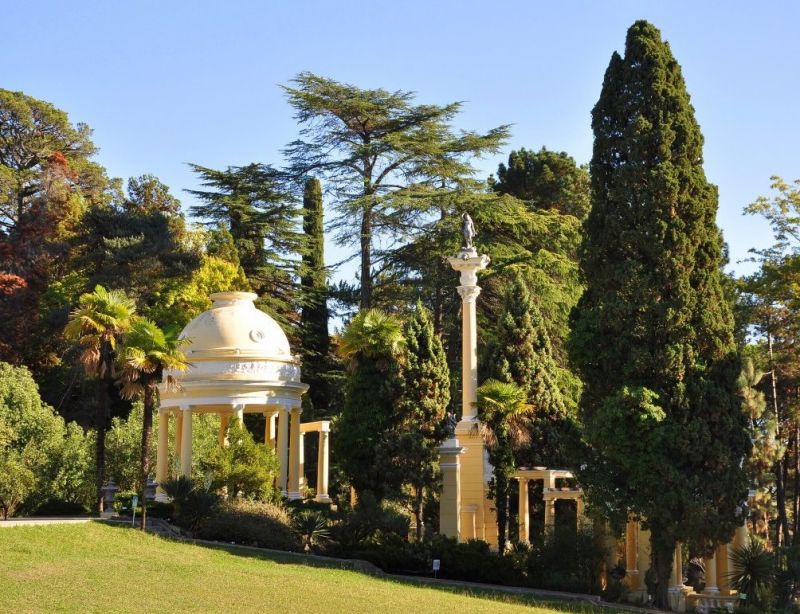While tour guides offer tourists to go to a waterfall and social networks are filled with posts like “Unknown Landmark”, the EcoTourism EXPERT correspondent has collected the most interesting things about iconic locations in Sochi. Everyone who comes to the resort city sees them but few people know their secrets. Igor Sizov, the most popular local guide in Sochi, told us about the secrets. He has been living in the resort city for more than half a century and has been a reporter for over 40 years, carefully collecting all the most interesting things about the city he likes. So…
In Sochi or in Magadan?
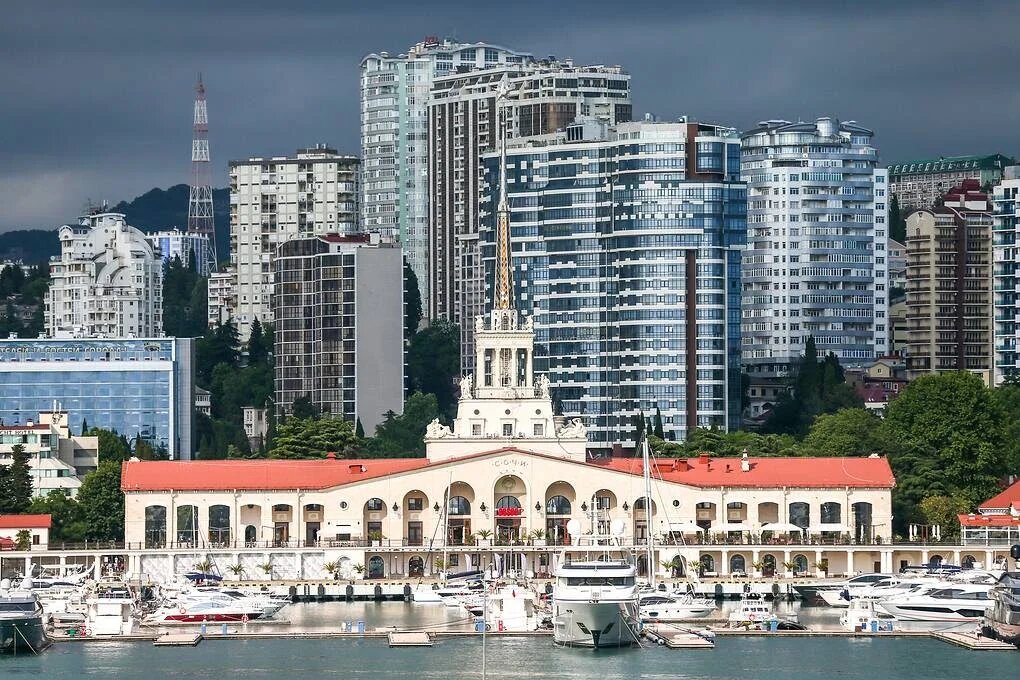
One of the most beautiful places in Sochi attracting millions of tourists is the Sochi seaport. An elegant building with a spire flying into the sky has rightfully become a symbol of the city, which appears both on TV screens and on toy-magnets. A little bit of its story…
Sochi is a sea city but there was no seaport in it until the 1930s. Only in 1934, on the Joseph Stalin’s order, the decision was taken to build a seaport. The place was chosen at the mouth of the Sochi River, not the most suitable for a seaport. And the legend implies as follows …
The architects asked Stalin, “Is there any other place to build a seaport in Sochi?”
“Yes, there is”, Stalin answered. “But it is in Magadan” (the place of exile in the Soviet days – ed.).
As a result, in 1938, the specialists from the Leningrad Branch of the Giprovodtrans Design Institute developed a draft design for the seaport of Sochi. It was planned to build the North and South breakwaters, a shallow pier with a 3.5-meter-deep harbor, an embankment of a large harbor (its depth was to reach 7.5 meters), and, of course, the building of the marine passenger terminal. Such a seaport was supposed to receive cruise and passenger ships of the Crimean-Caucasian line, local pleasure boats and gliding boats. 32.2 mn rubles (about $50 mn) were allocated for the seaport construction project. The Northern Pier was built before the Second World War. A huge number of wooden piles were driven into the seabed to build it.
After the Victory in WW2, the port construction started in 1947. Breakwaters, berths, ship workshops were built, and in 1951, the construction of the main port facility - the marine passenger terminal - began. An architectural design competition has been announced in the country. Joseph Stalin became the head of the panel of judges. The USSR leader liked the project developed by Academician of Architecture Karo Alabyan, architect Lev Karlik and engineer Alexander Kuzmin. It was a two-storied building looking both monumental and very light, with sea breezes blowing among the galleries. Many sculptures gave the building a special charm. Stalin Prize laureate Vladimir Ingal, a famous sculptor, created them. They are not only beautiful, but also symbolic. On the tiers of the high tower, there are male and female figures representing the four corners of the earth and the four seasons. On the very bottom tier, there are dolphins - like 12 months - bringing good luck and prosperity to the sea city. This entire ensemble is crowned by the Navigation fountain symbolizing the science of navigation.
An amazing story was connected with manufacturing the spire with a star on its top. It looks light-weighted but its weight is over 40 tons and it is 37.5 meters high, the second highest spire in the country after the one on the Peter and Paul Fortress. Its construction turned out to be very complicated and the specialists from several factories refused to make the spire, although several tens of millions of Soviet rubles were allocated for its manufacture. And then Alexander Khokhlov, a foreman of an ironworkers’ team, came to the office of the head of the construction site. He proposed an unusual, bold, original and extremely simple project. He said that five ironworkers of his team would make this stainless steel spire on their own and install it by themselves. They had some ideas and solutions... Leading specialists of the Academy of Architecture of the USSR checked the calculations made by Alexander Khokhlov and admitted that it was a very unusual method. As for payment, Khokhlov asked for a bonus of 100 to 120 rubles per person of his team. It didn’t cost several millions.
For the first time in the world practice, the installation of the spire began not from the base, but from the top, to be precise, from a star. A square opening was made in the ceiling of the main hall of the marine passenger terminal. The ironworkers of Alexander Khokhlov’s team set up their workbenches. First, a beautiful star was made, and the thin upper part of the spire was manufactured. When the structure was made, they used a simple hoist and a pulley system to lift the star and the top part of the spire straight to the ceiling. After that, they began to manufacture another steel segment. Then, the next one was made, and so on...
Amazed Sochi residents were surprised every day! The bright spire seemed to grow from the depths of the building. At first, a star appeared and it began to rise higher and higher. The team worked inside the building and the stainless steel spire kept on growing every day. It was made without any scaffolds, using a hand hoisting gear and pulley system. When the spire reached the required height, the workers secured its base with concrete blocks. The spire was made! Thanks to the Sochi’s skilled ironworkers, the bright spire of the marine passenger terminal has been towering over Sochi for almost 70 years, reminding of the labor feat of Alexander Khokhlov, an ordinary foreman of an ironworkers’ team.
By the way, the building of the marine passenger terminal can be seen not only in Sochi, but also in the famous film The Diamond Arm as many scenes were filmed there. The famous accountant Semyon Gorbunkov, played by actor Yuri Nikulin, started his exciting cruise from the Sochi seaport.
All covered with gold
The rapid development of Sochi as a resort city began in the 1930s. The idea belonged to the ‘leader of all peoples’, Joseph Stalin who said, “Soviet people can work hard at a factory and live in barracks, but once a year, they must have a chance to come to a resort and get into a real socialist paradise.” It was then that the Kurortny Avenue appeared in a small seaside town, and health resorts looking like palaces made in the Stalinist Empire style were built along the avenue. Tourists arrived in the resort city to enjoy spa services and health-improving practices in the morning, and swim in the sea and bathe in the sun in the afternoon. What do they do in the evening? Of course, they went to the Winter Theater.
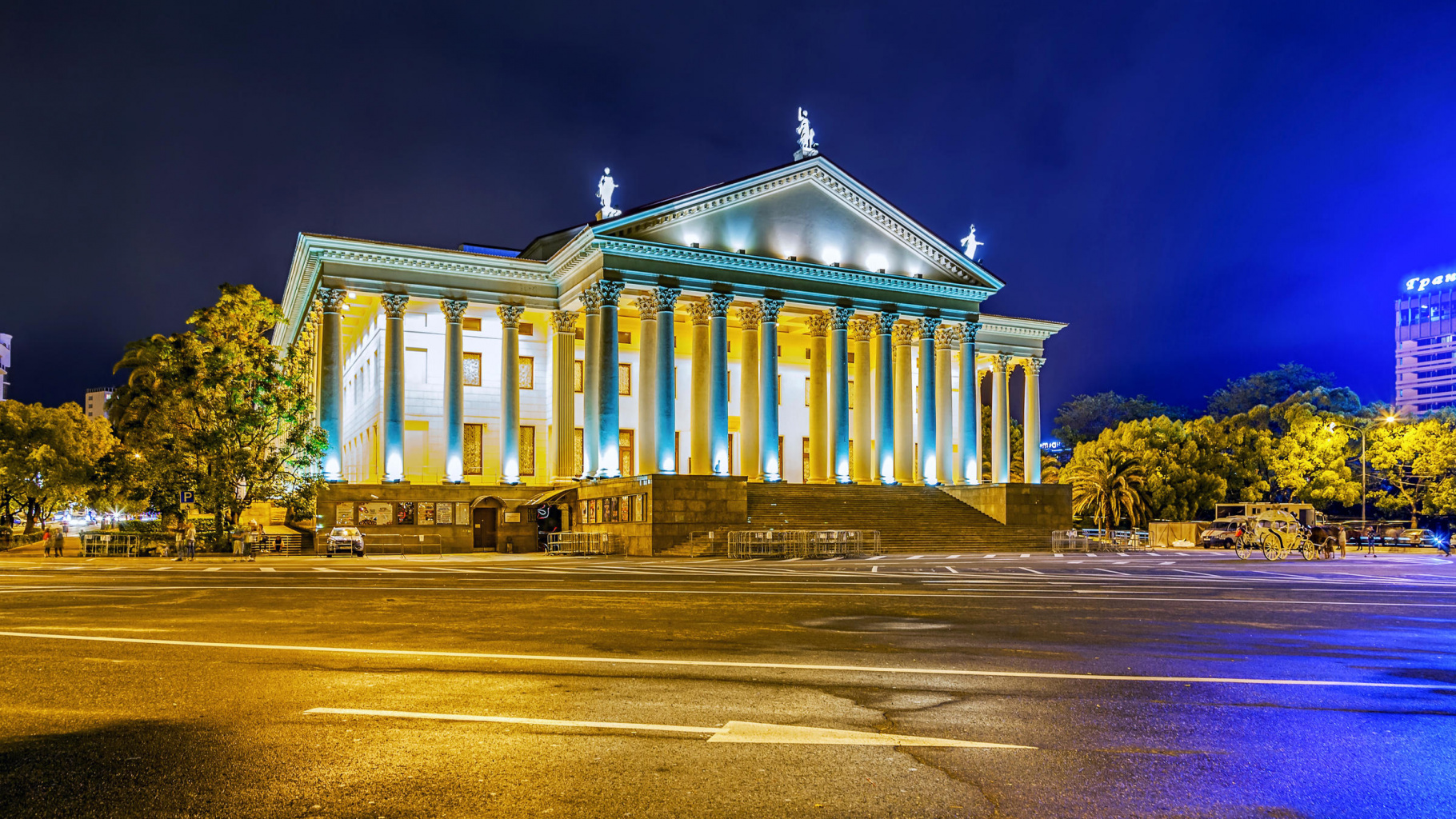
The construction of the Winter Theater in Sochi started in 1934. The architects had to solve a difficult task - where the front façade should be made. Stalin Avenue was on the one side, and the sea on the other one. In the long run, the project by the architect Konstantin Chernopyatov was chosen. According to his design, the classical style theater was surrounded by Corinthian columns and two front façades were made. In total, the Sochi Winter Theater has 88 columns, it is very symbolic as the piano has the same number of keys.
The construction of the Winter Theater in Sochi lasted for 3 years, from 1934 through 1937. As a result, the building turned out to be a ‘golden’ one. One day, the worker Tyutyunnikov suddenly noticed that the sand for plaster from a neighboring sand quarry was gleaming strangely. The samples were taken that showed the gold content reaching 6.5 grams per ton of rock. It turned out that there was not only natural, but also jewelry gold in the sand, including wrist watches, rings, bracelets, and so on, and more jewelry gold was ‘mined’ than natural one. Those were things lost by vacationers and washed ashore during storms. In April 1935, a mine was even set up in the city, where 150 people worked and gold nuggets weighing three and five grams were found. The mine was operated until the Great Patriotic War, then gold mines were set up in Magadan.
There is another secret in the Winter Theater. The fronton of the building is decorated with Greek sculptures. It would be logical to see the muses of the theater - Melpomene, Terpsichore and Grace. But there is a female figure with a Reichsfeder - the muse of Architecture - in the center, and the muses of Painting and Sculpture are on the right and left. The explanation is simple: when the construction of the Winter Theater was already completed, it turned out that there were sculptures, only they were ‘naked’, according to all the canons of ancient Greek architecture. How can ‘naked women’ be placed in a proletarian resort city? The authorities went to the workshop of sculptor Vera Mukhina who had three sculptures ready for some art museum. They took them, hoping that they would later replace them. But for 80 years, the Sochi Winter Theater has been protected by the muses of Architecture, Painting and Sculpture.
Firewater
A surprisingly beautiful sculptural composition is installed on one of the bends of Kurortny Avenue in Sochi. It is made of sandstone slabs, as if nature itself has polished a rock piece with the wind and created a portrait of a girl living in the mountainous area. The girl looks at people, offering them her gift - healing water. Only one word “Matsesta” is on the stones. Matsesta mineral water springs are in a mountain valley just a 20-minute drive from the center of Sochi.
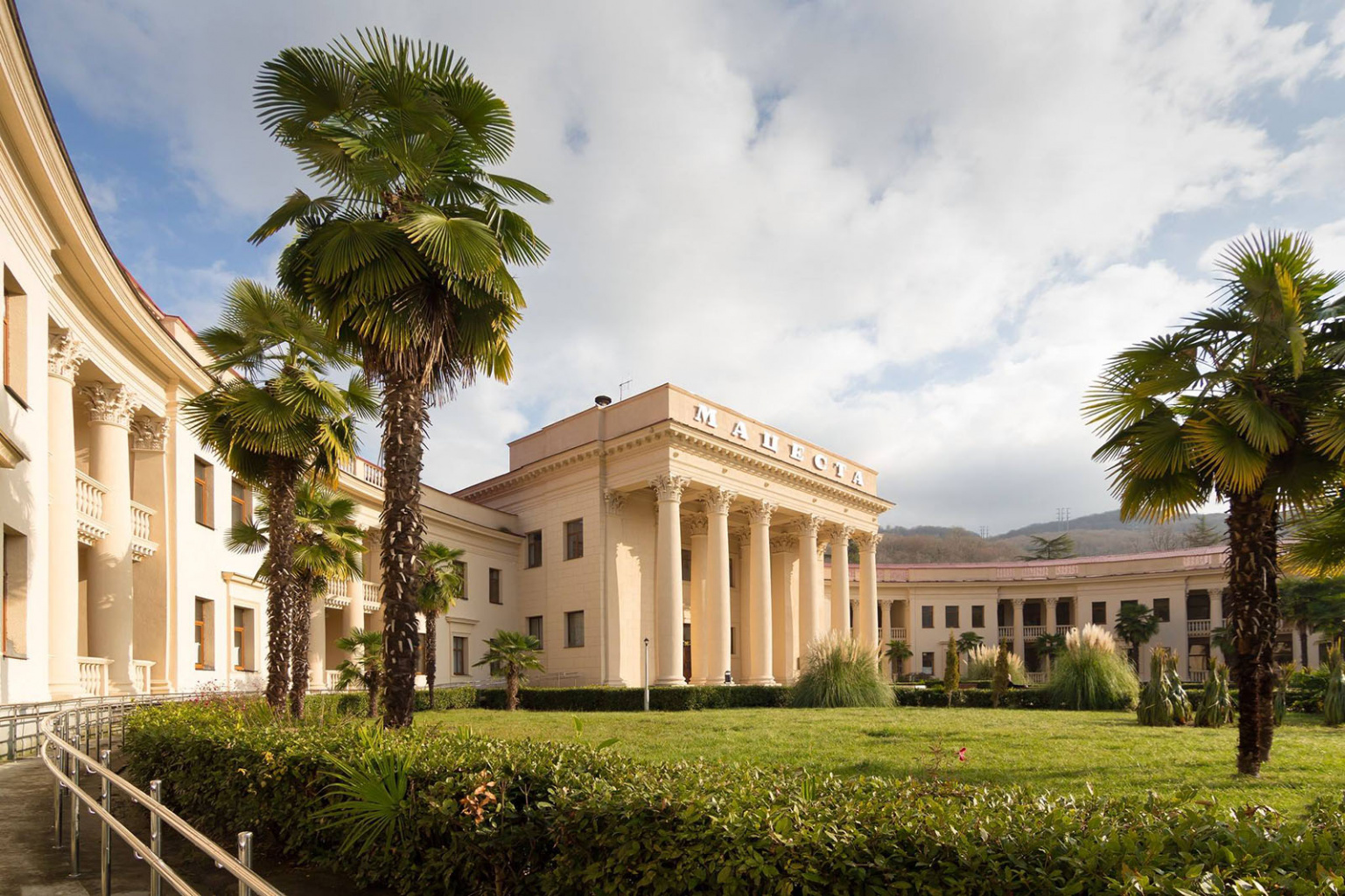
It was thanks to the Matsesta mineral water that the seaside town became a resort city. For the first time, the ancient Greeks spoke about the healing properties of the Matsesta water springs. The legend appeared in the 8th century B.C. about brave travelers who sailed to the shores of the Caucasus on the Argo ship where beautiful Medea treated people with the help of ... water, sulfur and fire. After the Black Sea coast of the Caucasus became a part of the Russian Empire in the 19th century, doctors who graduated from the medical faculties of the best universities in Moscow and St. Petersburg started coming to Sochi. They studied the springs from a scientific point of view and found out that Matsesta mineral water belongs to the family of sulfide waters with a high content of hydrogen sulfide. It contains carbon dioxide, nitrogen, methane and sodium chloride, calcium and magnesium ions, traces of lithium, barium and even gold. Penetrating through the skin and respiratory tract into the human body, hydrogen sulfide dilates blood vessels and makes the nerve endings work more actively, the patients’ blood circulation improves, blood pressure normalizes, all tissues become elastic, metabolism and the functioning of the nervous system improve. Using Matsesta baths, inhalations and irrigations, one can treat cardiovascular diseases, diseases of the skin, nervous system, and musculoskeletal system. So, taking baths with healing water, people have been treated since ancient times. And the first official healing session with the use of Matsesta spring’s water under the supervision of a doctor took place on September 15, 1902. It was held in a small wooden bathroom by Dr. Victor Podgursky. Since then, people started coming to Sochi to get rid of their illnesses. By the way, one of the first and most famous patients of Matsesta was Joseph Stalin.
‘The leader of all nations’ was an elderly man suffering rheumatic pains. Matsesta mineral water baths helped him as they helped Leonid Brezhnev, too. The Secretary General was brought into the bathroom building as he could not walk on his own, and after the Matsesta mineral water baths he could walk and even jumped. Since then, Brezhnev often spent his unofficial holidays in Sochi. By 1989, 18,000 people took baths daily at the Matsesta balneological complex.

During the years of the first five-year plans, the palace building of the main premises of the Matsesta balneological complex was built under the project of the architect Alexander Golubev. Now, this palace has become one of the architectural monuments of Sochi. And not far from it, there are caves where the springs of healing water were once discovered. Access to them is closed with bars. Several accidents happened here when those who wanted to improve their health suffocated from the smell of hydrogen sulfide. Therefore, taking procedures with Matsesta mineral water takes place under the strict control of doctors.
Well, about the name. The word ‘Matsesta’ means ‘Firewater’ from the Adyghe language. Why? It is enough to put your hand in a bath with Matsesta mineral water, and it will turn red as if burnt! Although you can immediately feel that the joint pain disappears at once!
Nadezhda’s Dacha
There are many parks in Sochi. But the most famous is the Arboretum Park.
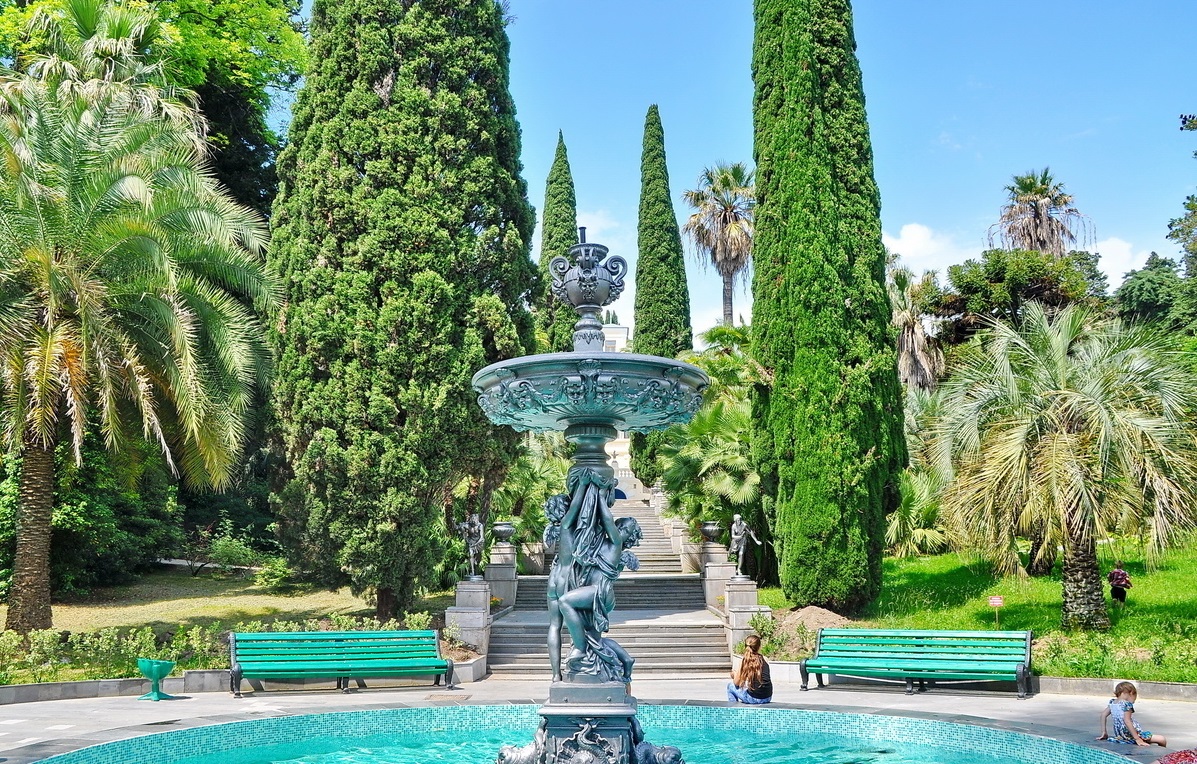
Its history is romantic. When the Russians came to the Caucasus, the tsar thought about creating a ‘Russian Riviera’. But rich people were not eager to go to the ‘malaria’ region. Then Alexander III began to offer the grand people to buy a land plot in Sochi and build summer cottages. He also contacted Sergey Khudekov, the publisher of the Petersburg Newspaper. Sergey Khudekov had no desire to have a dacha (summer cottage) in Sochi, but his wife interfered in the conversation saying, “Sergey, do you remember that when we were young and poor, you promised me that when you got rich you would build a dacha and call it my name?” Khudekov understood the hint. In 1889, he acquired 50 acres of land in Sochi. Dacha called Nadezhda (Hope) was built on the site. By the way, it houses the ballet museum now.
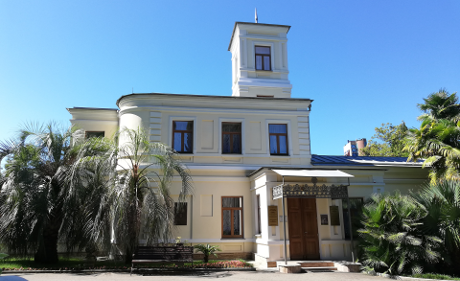
The famous gardener Langau laid out a park. The seedlings were ordered from the Nikitsky Botanical Garden located near Yalta, from the nursery of Prince Alexander of Oldenburg in Gagra, from the best gardens in Berlin, Dresden and Leipzig. Soon, Khudekov left his editorial post in St. Petersburg and moved to Sochi. The Arboretum Park was formed in an unusual way and combined the elements of an Italian terraced garden and an English landscape park. Various plant zones were created in it - the Mediterranean, Chinese, Australian, Caucasian sections, as well as the Himalayan, Japanese, and Mexican ones. Such a great migration of plants could not occur in a natural way, the Arboretum Park is a monument to hard human labor. Botanists continued Sergei Khudekov’s work. Even in wartime, they were in correspondence with employees of the best nurseries in the world, receiving seeds from there.

